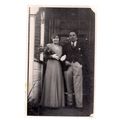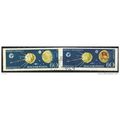Corfe Castle, Dorset - Raphael Tuck Picturesque Castles series art postcard
- Condition : Used
- Dispatch : 2 Days
- Brand : None
- ID# : 119226532
- Quantity : 1 item
- Views : 223
- Location : United Kingdom

- Seller : justthebook (+1703)
- Barcode : None
- Start : Mon 16 Sep 2013 20:11:50 (EDT)
- Close : Run Until Sold
- Remain : Run Until Sold
Checks/Cheques
 for 1 item(s) edit
for 1 item(s) edit
Shipping Calculator
More Listings from This Seller view all
Seller's Description
- Postcard
- Picture / Image: Picturesque Castles of Great Britain - Corfe Castle
- Publisher: Raphael Tuck Pictuuresque Castle No. 794
- Postally used: no
- Stamp: n/a
- Postmark(s): n/a
- Sent to: n/a
- Notes / condition:
Please ask if you need any other information and I will do the best I can to answer.
Image may be low res for illustrative purposes - if you need a higher definition image then please contact me and I may be able to send one.
------------------------------------------------
Postage & Packing:
UK (incl. IOM, CI & BFPO): 99p
Europe: £1.60
Rest of world (inc. USA etc): £2.75
No additional charges for more than one postcard. You can buy as many postcards from me as you like and you will just pay the fee above once. (If buying postcards with other things such as books, please contact or wait for invoice before paying).
Payment Methods:
UK - PayPal, Cheque (from UK bank) or postal order
Outside UK: PayPal ONLY (unless otherwise stated) please. NO non-UK currency checks or money orders (sorry).
NOTE: All postcards are sent in brand new stiffened envelopes which I have bought for the task. These are specially made to protect postcards and you may be able to re-use them. In addition there are other costs to sending so the above charge is not just for the stamp!
I will give a full refund if you are not fully satisfied with the postcard.
----------------------------------------------
Text from the free encyclopedia WIKIPEDIA may appear below to give a little background information (internal links may not work) :
*************
Corfe Castle is a fortification standing above the village of the same name on the Isle of Purbeck in the English county of Dorset. Built by William the Conqueror, the castle dates back to the 11th century and commands a gap in the Purbeck Hills on the route between Wareham and Swanage. The first phase was one of the earliest castles in England to be built using stone when the majority were built with earth and timber. Corfe Castle underwent major structural changes in the 12th and 13th centuries.
In 1572, Corfe Castle left the Crown's control when Elizabeth I sold it to Sir Christopher Hatton. Sir John Bankes bought the castle in 1635, and was the owner during the English Civil War. His wife, Lady Mary Bankes, led the defence of the castle when it was twice besieged by Parliamentarian forces. The first siege, in 1643, was unsuccessful, but by 1645 Corfe was one of the last remaining royalist strongholds in southern England and fell to a siege ending in an assault. In March that year Corfe Castle was demolished on Parliament's orders. Owned by the National Trust, the castle is open to the public and in 2010 received around 190,000 visitors. It is protected as a Grade I listed building and a Scheduled Ancient Monument.
The name Corfe means ""a pass"" in Old English. Corfe Castle was built on a steep chalk hill created by two streams eroding the rock on either side. The construction of the medieval castle means that little is known about previous activity on the hill. However, there are postholes belonging to a Saxon hall on the site.[1] The hall may be where Edward the Martyr was assassinated in 978.[2]
A castle was founded at Corfe on England's south coast soon after the Norman Conquest of England in 1066. The royal forest of Purbeck, where William the Conqueror enjoyed hunting, was established in the area.[3] Between 1066 and 1087 William established 36 such castles in England.[4] Sitting as it does on a hill top, Corfe Castle is one of the classic images of a medieval castle, however despite popular imagination, occupying the highest point in the landscape was not the typical position of a medieval castle. In England, a minority are located on hilltops, but most are in valleys; many were near important transport routes such as river crossings.[5]
Unusually for castles built in the 11th century, Corfe was partially constructed from stone indicating it was of particularly high status. A stone wall was built around the hill top, creating an inner ward or enclosure. There were two further enclosures: one to the west, and one that extended south (the outer bailey); in contrast to the inner bailey, these were surrounded by palisades made from timber.[3] At the time, the vast majority of castles in England were built using earth and timber, and it was not until the 12th century that many began to be rebuilt in stone.[6] The Domesday Book records one castle in Dorset; the entry, which reads ""Of the manor of Kingston the King has one hide on which he built Wareham castle"", is thought to refer to Corfe rather than the timber castle at Wareham.[7] There are 48 castles directly mentioned in the Domesday Book, although not all those in existence at the time were recorded.[8] Assuming that Corfe is the castle in question, it is one of four the Domesday Book attributes to William the Conqueror; the survey explicitly mentions seven people as having built castles, of which William was the most prolific.[9]
type=printed postcards
theme=topographical: british
sub-theme=england
county/ country=dorset
number of items=single
period=inter-war (1918 - 1939)
postage condition=unposted
Listing Information
| Listing Type | Gallery Listing |
| Listing ID# | 119226532 |
| Start Time | Mon 16 Sep 2013 20:11:50 (EDT) |
| Close Time | Run Until Sold |
| Starting Bid | Fixed Price (no bidding) |
| Item Condition | Used |
| Bids | 0 |
| Views | 223 |
| Dispatch Time | 2 Days |
| Quantity | 1 |
| Location | United Kingdom |
| Auto Extend | No |


















